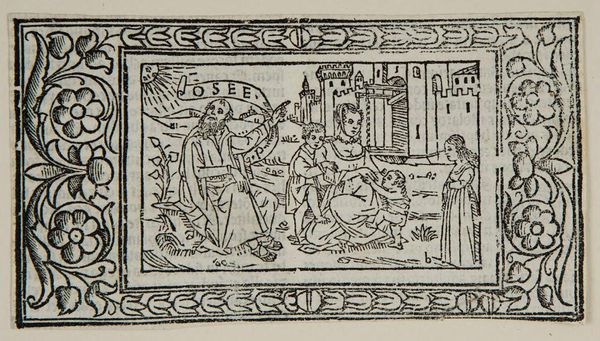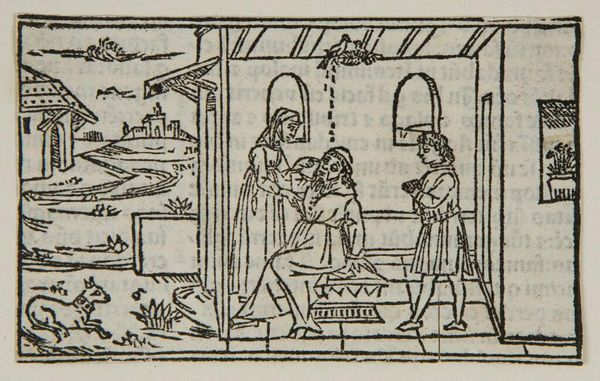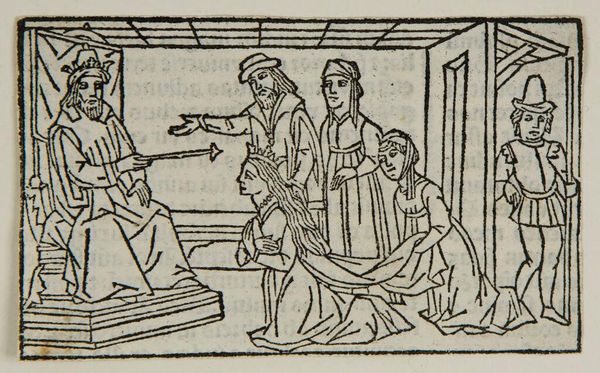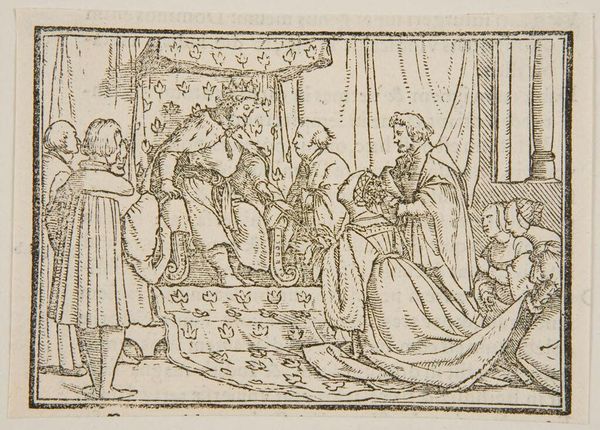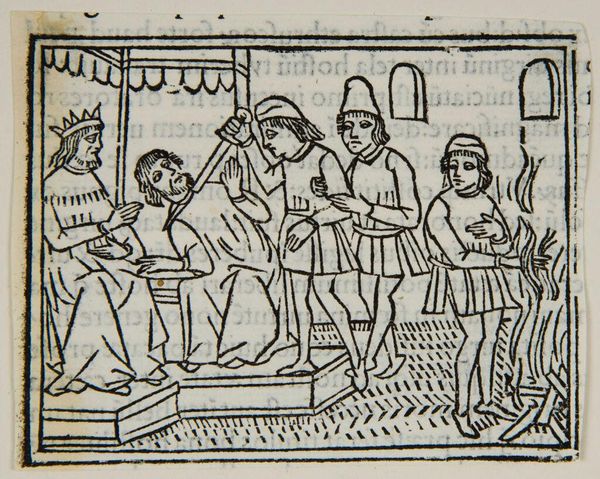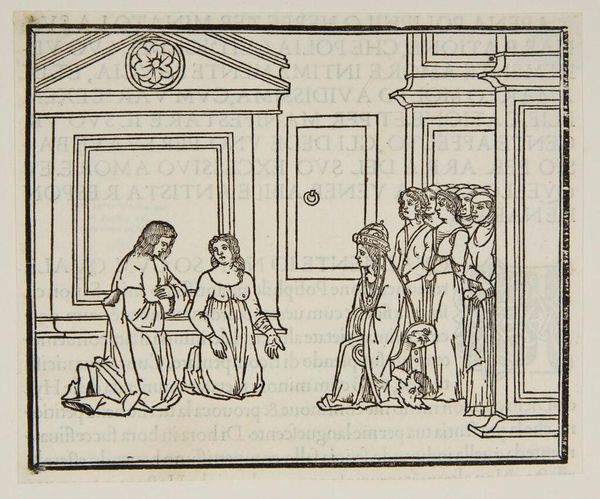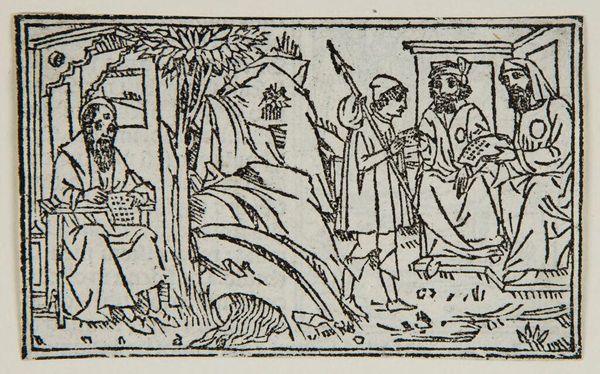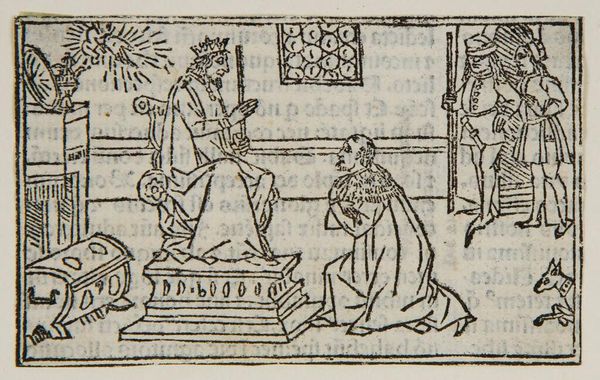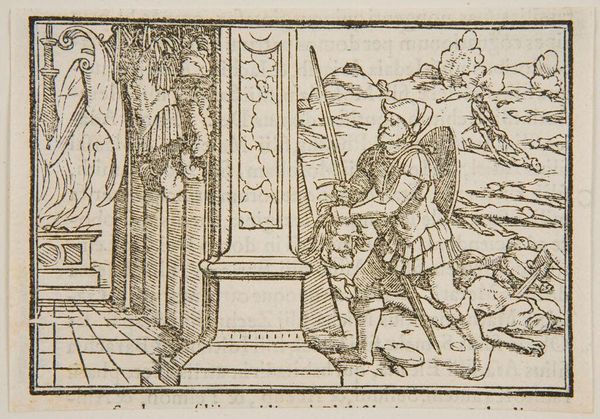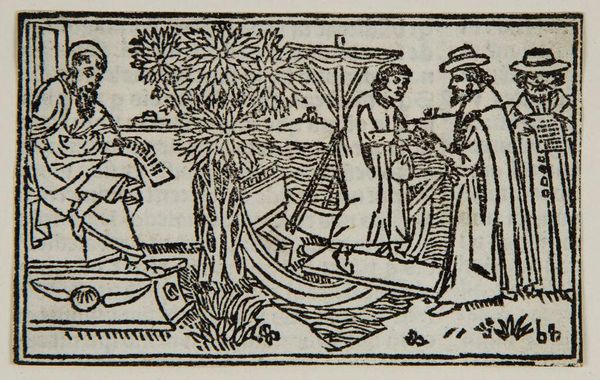
Dimensions: 6.5 Ã 12 cm (2 9/16 Ã 4 3/4 in.)
Copyright: CC0 1.0
Editor: Here we have an anonymous woodcut print titled Bathsheba and Uriah. It’s quite small, only about 6 by 12 centimeters. The stark black lines create a very formal, almost rigid feel. What statements do you feel this piece is trying to make? Curator: It’s crucial to recognize how this work, though seemingly simple, participates in a long history of depicting female bodies and power dynamics. Do you notice how Bathsheba is positioned in relation to the king, and the gaze of the other figures? Editor: Yes, she's kneeling and seems to be the only woman in the foreground. Curator: Right. How might we consider this depiction of female submission within broader societal and political contexts of its time? How did such images reinforce or challenge existing power structures? Editor: I hadn’t thought about it that way. I was just focused on the historical narrative itself. Curator: Exactly! Examining these images through an intersectional lens opens up new ways of understanding not just the artwork but also the society that produced it.
Comments
No comments
Be the first to comment and join the conversation on the ultimate creative platform.
